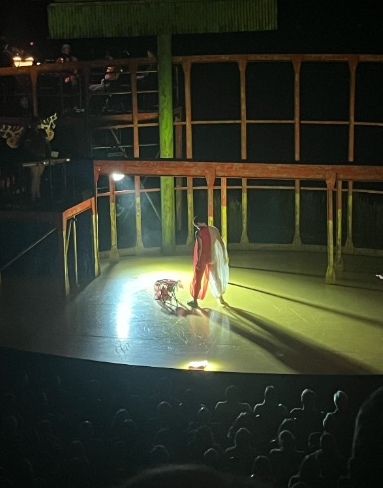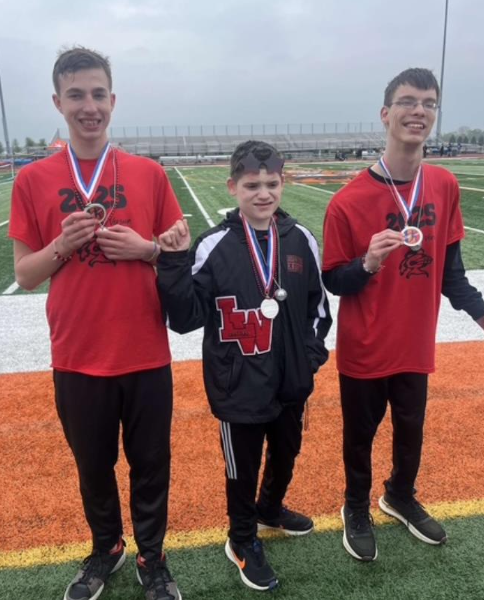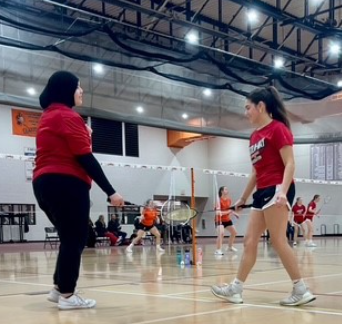One of the most undervalued experiences someone could have is seeing a piece of media they have enjoyed for a long time adapted to fit into a new medium. This phenomenon explains the popularity of the live-action Disney remakes, or films based on popular novels, just to name a few examples. Only a select few of these adaptations, however, are able to create a personal, deep connection to the piece it is derived from, and allow the audience to appreciate both versions equally. In my personal opinion, thus is the case with the recently debuted stage adaption of Sufjan Stevens’ cult-classic album “Illinoise”.
I’ve mentioned Sufjan before on The Pulse to specifically review his most recent project “Javelin;” the reason being is because he is one of my personal favorite musicians of all time. So when I heard the news in mid-2023 that my favorite project of his, “Illinoise” was getting a musical theater adaptation, I was ecstatic. Another person that shared my excitement was one of my best friends and “Knight Times” alumni James Thomson, who suggested that we both make the trip to Navy Pier in Chicago to see it when it came out. Spoilers to the end of this article, but the six-plus month long wait to the fourth of February was well worth it.
After a quick 45 minute long trip, we arrived at Navy Pier, which was our first time there, and Jimmy’s first time seeing a musical all-together. The venue was very intimate, with a balcony that hosted the pit musicians and guest vocalists overlooking the main stage, which included a prop of a giant billboard and a wall, which was deceptively wide enough to walk on, dividing the front-end of the stage and a set for a forest scene. Five minutes before showtime, probably the largest pit ensemble I have ever seen for a stage production climbed up into their canopy. They were an enormous focal point of the show, providing the backdrop for the actors, and included a wide variety of instruments, including two whole percussion sets and several electric guitars. Two guest vocalists soon joined them, which I have personally never seen for a stage show. “Why would they need vocalists above the actors if there were going to be plenty of people doing the job for them?” I thought to myself. I would soon discover the answer.
It was around the third song, “Come On! Feel the Illinoise!” when I realized something strange: there had been no dialogue between the actors whatsoever. It became clear to me at that moment that I was in for a completely different artistic expression than I expected going into the show. Normally, when you decide to watch a musical put on by our own theater production, for example, what would you expect? Normally one would include comedic banter between charismatic and often dramatized portrayals of characters eventually leading to flashy musical numbers. This is not the case for “Illinoise.” In one of the most creative interpretations of a stage production I have personally seen, the story was carefully told only through original songs from the album with no real “talking” between the characters, only the two aforementioned guest singers and band beautifully covering Sufjan’s classic pieces, with dancers on stage acting out what was being told in the lyrics.
Even though it was akin to a classic silent film, there was a clear and present narrative being told within the play. The first act entails a collection of stories told by a campfire by a group of friends, with each one getting a turn to eventually enact a musical number based on a song from the album. For example, a nameless character describes a tale based off of Superman, scored by “The Man of Metropolis Steals Our Hearts.” These stories vary in tone and reactions from the other friends sitting by the fire. One involving notorious Chicago serial killer John Wayne Gacy, causes the narrator to almost have a panic attack, much like Sufjan during the ending of “John Wayne Gacy Jr.” It was almost spellbinding to Jimmy and I seeing these songs that we’ve loved for so long receive potent and impressive visuals to accompany them.
The second act is another story – albeit this one much longer – and is told by the main character, Henry. Without devolving into spoilers, his story is much more dramatic, heartbreaking, and layered than the ones told in the first act. What was unique about this second act in particular was how it gathered a collection of songs from the album not in their original order, but rearranged to tell a wildly different narrative than the one Sufjan told all the way back in 2005. This is the primary reason why I loved this adaptation so much: its creativity. I really haven’t experienced any other retelling of an original story that has deviated so much from its source material that sticks the landing as much as this did. Someone could watch this show knowing nothing about the original album and take as much enjoyment out of it as I did. That’s the thing about great art: it catches you by surprise, and brings out the most emotional reactions from any audience member.
If there’s anything to take away from this experience…first of all, go see this adaptation if you haven’t already, and second of all, never write off something before you experience it. You might not get what you expect.









